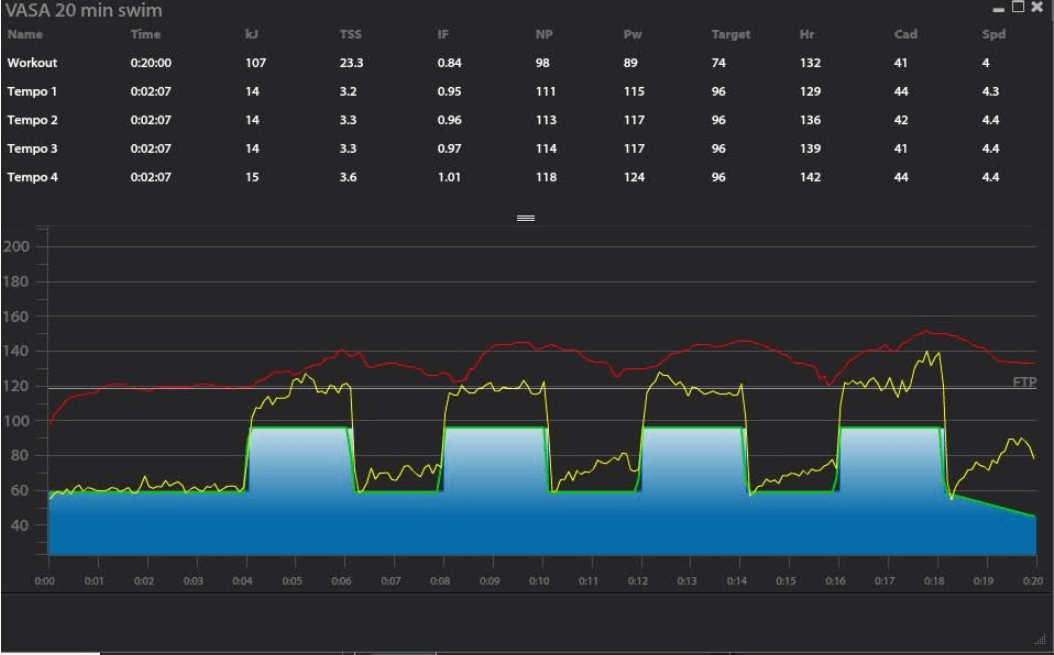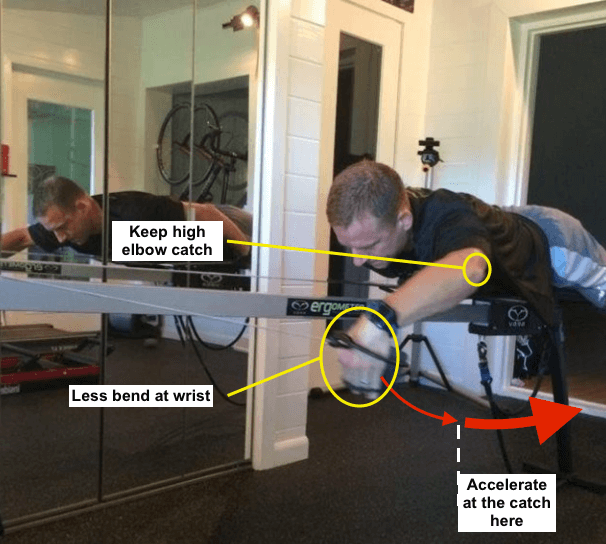It’s no secret that coaching can improve swimmer or triathlete performance.
It can be especially effective during the off-season when many athletes struggle to find adequate time to train in the pool or the gym. Coaching can improve motivation and help athletes maintain techniques throughout the year.
But does a coach have to be physically present in order for athletes to see results?
The rise of technology has made way for an increase in remote coaching – coaches that can monitor, assess, and craft workouts from anywhere in the world.
Those who haven’t yet tried remote coaching may wonder about its effectiveness. Is remote coaching as good (or better) than traditional, in-person coaching?
The answer is, for the most part, yes.
Remote coaching provides a unique way to train during the off-season, but there are things that swimmers should know before investing time or resources into remote coaching.

How Does Remote Coaching Work?
Remote coaching simply means the coach is not physically present to coach an athlete during a training session.
Instead, coaches use technology to monitor training results, such as pace, time, stroke count, right & left side power balance, and so on, to assess and analyze performance. They rely on the metrics to create training programs with targeted workout progressions, swim-specific drills, and supplemental strength exercises designed to make the athlete more durable and technically efficient in order to improve performance in the water.
This is mainly accomplished through the use of technology like wet tech (a waterproof swim watch, for example), specialized training equipment (like the Vasa SwimErg, shown below, which can monitor power output), and video, either “selfies” sent to the coach for analysis, or with real-time chat tools like Skype or Google Hangouts.

For some athletes, remote coaching has become a significant part of their successful training and racing.
Ironman World Championship Qualifier Shannon Coates was introduced to remote coaching by a friend and connected with Masters Swimming & Triathlon coach, Eric Neilsen.
She details her experience on her blog, saying:
“Through careful analysis of my training on the Vasa SwimErg, Coach Eric was able to identify that my swim-specific strength needed to improve. This makes sense because as a runner, I was always a “leg athlete” and never really needed to build upper body strength.”
Shannon used the Vasa SwimErg’s power meter to record her power output and send the data to Eric, who would give her specific workouts, drills, and advice on how to improve her open water swimming technique.
Eric details his process here, adding:
“The [SwimErg’s] ANT+ wireless power meter makes it easy to upload and track data. I can look at where an athlete might start to fade on different types of sets. Determining the athlete’s limiters, such as the ability to generate force, ability to sustain stroke rate or a combination of both, is critical to making progress.”
This type of training and coaching can happen anywhere as long as both parties have access to the right tools.

Should You Invest in Remote Coaching? Is It Effective?
So who should invest in remote coaching? Is it effective for everyone?
Remote coaching can be a great option for both swimmers and triathletes for a number of reasons, including (but not limited to):
- Time savings – Remote coaching can happen on a tight or unpredictable schedule, which can be great for athletes that work long hours or travel during the off-season
- Access to expertise – Remote coaching gives any swimmer access to the top coaches from around the world, without having to pack up and move to train with them
- Consistency & Motivation – A good coach will provide the right workouts at the right time, which leads to consistent swim training to make small, steady improvements in technique & sustained power. That’s motivational.
- Performance boosts – Remote coaching can provide additional insights that might otherwise be missed by the athlete training on their own
But there are some challenges that athletes might face as well, including:
- Commitment – Remote coaching is still a commitment, and while it can aid in motivation during the off-season, it’s still something that the athlete needs to make time for
- Costs – Remote coaching isn’t usually free, and costs can range from low to high depending on the coach/expert and the equipment involved
- Access to technology – There will be technology involved, and while some of it is totally free (Skype, for example), others may require a financial commitment.
In terms of effectiveness, remote coaching can yield similar results to in-person training if you commit to it.
Ironman competitor Ian Kurth, MD did nearly all his triathlon swim training at home with his Vasa SwimErg indoor swim trainer and a remote coach (also coach Eric Nielsen).
One of the reasons Ian chose remote coaching and training on the Vasa SwimErg was the high cost of getting to the pool on a regular basis. As a busy doctor, remote coaching saved him countless hours training and still improved his triathlon performance in 2016. It’s worth taking a few minutes to calculate the time and financial savings found with quality swim training at home.
In fact,
While triathlon coaches excel in creating unique training programs for specific races and goals, many triathletes still struggle with swim mechanics. Hiring a remote swim coach in addition to a triathlon coach can help improve swimming performance for that leg of the race.
So while there are tradeoffs with remote coaching, it can still be used as an effective training tool for the right athletes.

Tips for Making the Most of Your Remote Coaching Time
If you decide to invest in remote coaching, it’s important to understand how remote coaching works and what you can do, as a swimmer, to get the most out of your time with a remote coach.
Here are a few tips for getting the most out of your time with a remote coach:
Tip 1: Start by establishing goals and creating a plan.
Don’t waste time worrying about the technology you will use to track your metrics right away. The first thing to focus on – and most likely the first thing the coach will do – is goal setting. Understanding what you want to achieve and what you can/can’t achieve with remote coaching will be vital to staying motivated and seeing results from a remote program.
Tip 2: Hold yourself accountable and don’t cheat.
While some tools will automatically record certain things like power output, swim time, and so on, there is still room for swimmers to fudge the numbers, especially if workouts are recorded on low tech tools like spreadsheets. But lying about your workouts won’t give you results. Be honest about what you’re doing and be open with your remote coach about ways to improve.
Tip 3: Use remote coaching as a way to stay motivated.
Skilled coaches will know when to nudge and when to offer moral support or encouragement. Training during the off-season is tough enough when busy schedules and the demands of life interfere with training time. Use remote coaching as a way to stay motivated during those times so that you can focus on training hard when the season begins again.
Tip 4: Find a coach who communicates clearly with you.
If you can’t understand your coach, be that jargon, drills, analogies, then you won’t be able to get the most out of that coaching. Always ask for clarification about workouts that are confusing and ask questions! If a coach can’t respond to your needs, switch coaches.
Tip 5: Seek a coach who has trained athletes like you.
With remote coaching, you’re simply not limited to coaches who work nearby you. It opens the opportunity to find a coach who has proven success working with other athletes (masters swimmers, triathletes, etc) and who has experience helping athletes overcome the challenges you face.
When it comes to remote coaching, don’t settle. Find someone who will make you a stronger, better, faster swimmer.
Final Thoughts
So, is remote coaching worth it?
For many triathletes and swimmers, the pros of swim training at home, with the help of a qualified coach, typically far outweigh the cons, especially for those who are time-crunched and have to choose between consistency or spotty swim training at crowded inconvenient pools.
As long as the athlete and coach understand the ultimate goals of the training session, both have access to the right technology to communicate and are dedicated to seeing the same outcome, then it can be highly successful. This is the case for many athletes, especially compared to going it alone, doing what you’ve always done, yet expect a different result.